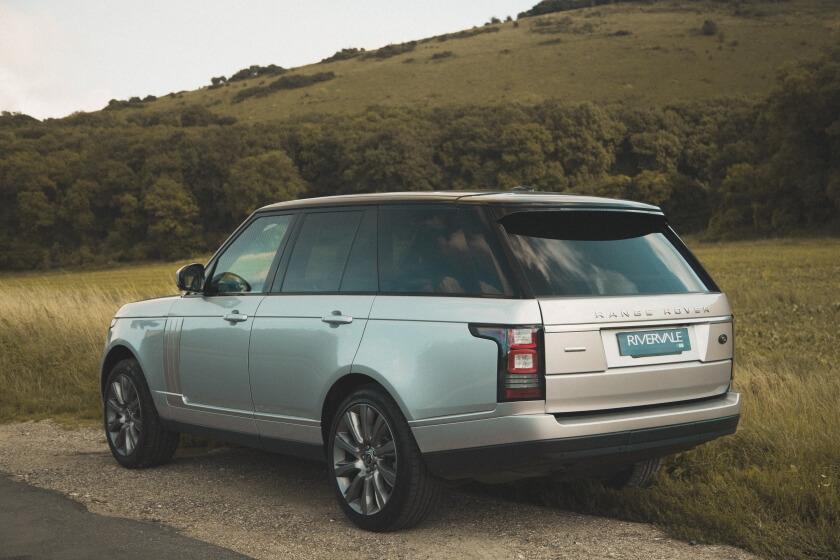What is a Dual-Purpose Vehicle?

So what is a dual purpose vehicle?
A dual purpose vehicle is a vehicle that has been made or can be adapted for the carriage of both passengers and or goods, which has a maximum laden weight not exceeding 2,040 kg. The driving power of the engine in some cases can be selected to suit the purpose of use.
Here at Rivervale we often hear our customers say they need a ‘dual-purpose’ vehicle and they are usually always referring to a car or van that can be used for both work and family, or work and hobbies. The new generation of executive SUVs, has seen alternatives to suit all budgets and the growth in the SUV and Crossover market has been strong with more manufacturers releasing dual purpose models.

Dual Purpose Vehicle Leasing with Rivervale
If you're in the market for a dual purpose vehicle, Rivervale Leasing is the perfect place to start your search. With a wide range of vehicles available for lease or purchase, including Estates, SUVs and Pick Ups, Rivervale Leasing can help you find the perfect vehicle to meet your needs.
Everyday use
In general manufacturers to a certain extent will identify the traditional trades vehicles as dual purpose, for example Ford Transit Custom having three seats in the front or the Double cab version with a row of passengers’ seats behind the front seats. Similarly, those who use their vehicles for long commutes may look for a vehicle that can tick the box for family requirements, pets or certain hobbies. If we look back over time we can see that manufacturers have always had this in mind and starting with body types like the estate and more recently the SUV, Crossover and 4x4 styles that seem to be able to do it all.
Having the right classification and insurance premium
The car or van question is a grey area in insurance, there seems to be a number of ‘official’ takes on the exact classifications and guidelines. If your vehicle is a regular saloon, hatchback or estate it will be classified as an M1 passenger-carrying vehicle. Multi-Purpose Vehicles such as minivans and people carriers will also be classified as M1 passenger-carrying vehicles if the vehicles sole purpose of use, as categorised by the manufacturer, is for social, domestic, pleasure and commuting.
If your vehicle seats 9 passengers or more then it is classified as a minibus and you need to make sure that you insure this vehicle as a minibus regardless of whether it is privately owned and used solely for personal use. If we look at ‘light-commercial vehicles’ such as pick-up trucks and larger 4x4 utility vehicles although they often have all the luxuries of a car they may actually be classed as a commercial vehicle as they were designed with cargo or other roles in mind. These are insured as vans.
Speed limits for cars and vans
The speed limits for each vehicle type can vary, and should you be found speeding now you could be fined 25% - 75% of your weekly salary! The larger pick-ups we are seeing more frequently could be caught in a double cab pick-up speeding trap. Some should be sticking to van speed limits rather than the higher limits for cars and the popular double cab derivatives of the latest Ford Ranger, Toyota Hilux and Volkswagen Amarok can actually exceed the legal 2,040kg unladen weight classification for dual-purpose vehicles, which means they are no longer covered by passenger car speed limits.
LCV’s and vans up 3.5 tonne should follow the below guide as a rule of thumb.
Built up areas 30mph
Single carriageways 50mph
Dual carriageways 60mph
Motorways 70mph

What are the benefits of having a dual purpose vehicle?
The 5 seater, double cab varieties are winning in the popularity stakes. Because they provide both flexibility – a reliable work vehicle for the working week and a useful and comfortable family car for the weekend – so costs are saved by not investing in a second car.
The HMRC’s VAT and Benefits-in-Kind rules could see you save some pennies too. To qualify, you need to have a payload of at least one tonne, to classify as a Light Commercial Vehicle – so make sure that, if you opt for a removable roof, this doesn’t then take it under that figure. If you’re an employee of your company, you can take advantage of the reduced Benefits-in-Kind rates, covering personal use of a company vehicle outside of normal working hours.
Finally, if you’re VAT-registered, you can reclaim considerable amounts of VAT, so its important you look into the tax implications carefully.





